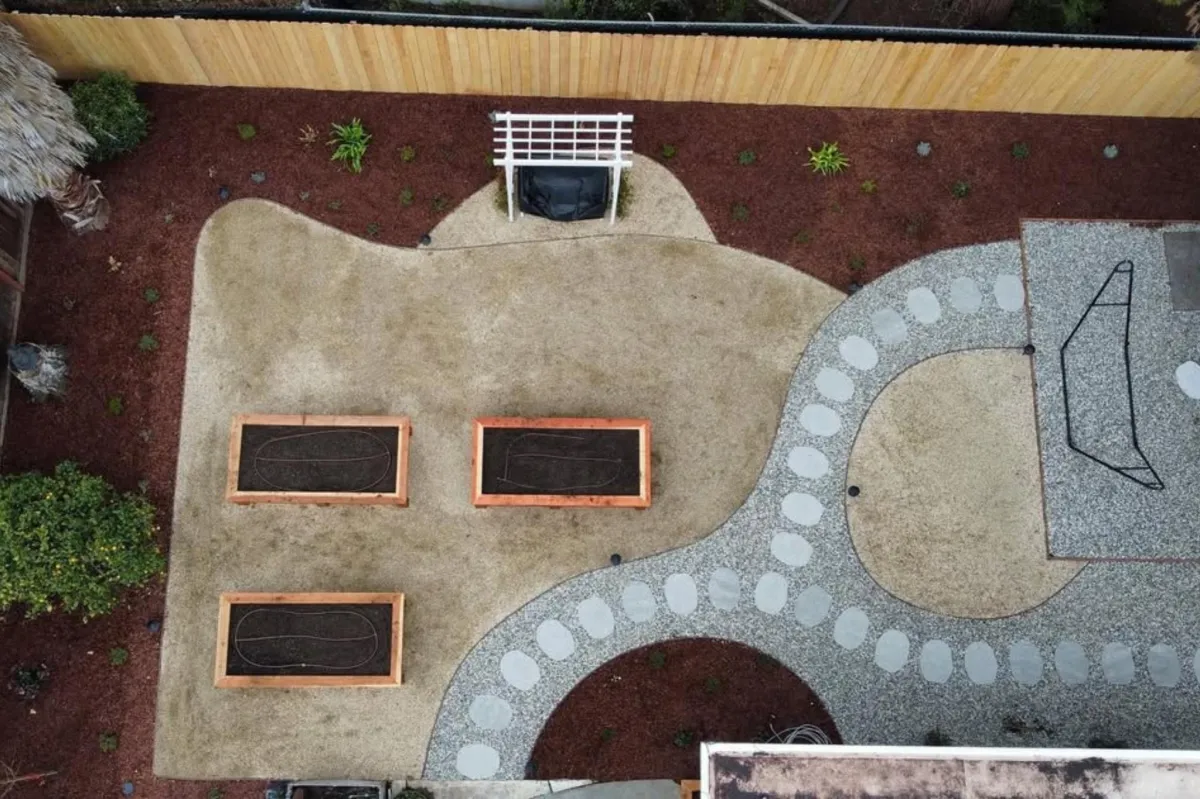Blog Articles

How Can I Reduce Water Usage in My Landscaping?
Reducing water usage in landscaping starts with smart design and efficient practices. By incorporating drought-tolerant plants, optimizing irrigation systems, and using techniques like mulching and rainwater harvesting, you can create a beautiful, sustainable yard that conserves water and saves money.
At Flor Landscaping, we provide innovative solutions to help homeowners achieve water-efficient landscaping that’s both functional and visually appealing. Whether you’re looking to cut down on utility bills or do your part for the environment, our expert tips and services will help you transform your outdoor space.
1. Embrace Xeriscaping
What is Xeriscaping? Xeriscaping is a landscaping method that prioritizes water efficiency by incorporating drought-tolerant plants, efficient irrigation systems, and thoughtful design.
Steps to Implement Xeriscaping:
Choose Native Plants: Opt for plants that thrive in your local climate and require minimal watering. Native species are adapted to natural rainfall patterns and are more resistant to pests.
Group Plants by Water Needs: Place plants with similar water requirements together to make irrigation more efficient.
Replace Thirsty Grass: Consider replacing traditional turf with alternatives like clover, ornamental grasses, or artificial turf.
Benefits:
Significant reduction in water usage.
Lower maintenance costs.
Enhanced biodiversity.
2. Optimize Your Irrigation System
Install a Smart Irrigation System Smart irrigation systems, such as weather-based controllers or soil moisture sensors, automatically adjust watering schedules based on weather conditions or soil moisture levels.
Use Drip Irrigation Drip irrigation delivers water directly to the roots of plants, minimizing evaporation and runoff. This method is particularly effective for flower beds, shrubs, and vegetable gardens.
Regular Maintenance:
Inspect irrigation systems regularly for leaks or clogs.
Adjust sprinkler heads to avoid watering sidewalks or driveways.
Water early in the morning or late in the evening to reduce evaporation.
3. Incorporate Mulching
What is Mulching? Mulching involves applying a layer of organic or inorganic material around plants to retain soil moisture, reduce evaporation, and regulate soil temperature.
Best Mulching Materials:
Organic: Wood chips, bark, straw, or compost.
Inorganic: Gravel, stones, or rubber mulch.
Tips for Effective Mulching:
Apply a 2-3 inch layer around plants, avoiding direct contact with stems or trunks to prevent rot.
Refresh the mulch periodically to maintain its effectiveness.
Benefits:
Conserves water by reducing evaporation.
Suppresses weed growth.
Improves soil quality (for organic mulches).
4. Choose Drought-Tolerant Plants
Examples of Drought-Tolerant Plants:
Succulents: Aloe vera, sedum, and echeveria.
Perennials: Lavender, yarrow, and Russian sage.
Groundcovers: Creeping thyme, ice plant, and juniper.
Why Choose Drought-Tolerant Plants? These plants require less water and can thrive in dry conditions, making them ideal for water-wise landscaping.
5. Reduce Lawn Size
Lawns typically require more water than other landscape features. Reducing their size or replacing them with alternative ground covers can save significant amounts of water.
Alternatives to Lawns:
Groundcovers like creeping thyme or moss.
Rock gardens with drought-tolerant plants.
Paved areas for outdoor living spaces.
Tips for Remaining Lawn Areas:
Use drought-tolerant grass varieties, such as Bermuda or Buffalo grass.
Keep the grass at a higher height to shade the soil and reduce evaporation.
6. Harvest Rainwater
Install Rain Barrels Rain barrels collect and store rainwater from your roof for later use in watering plants and gardens.
Create a Rain Garden Rain gardens are designed to collect and absorb runoff from roofs, driveways, and other hard surfaces. They are planted with water-loving, native plants and serve as a beautiful and functional landscape feature.
Benefits of Rainwater Harvesting:
Reduces dependency on municipal water supplies.
Provides a sustainable water source.
Helps manage stormwater runoff.
7. Improve Soil Quality
Healthy soil retains water more effectively and reduces the need for frequent watering.
Steps to Improve Soil Quality:
Add organic matter like compost to improve soil structure.
Test your soil’s pH and nutrient levels to determine what amendments are needed.
Aerate compacted soil to allow water to penetrate more easily.
8. Install Permeable Hardscaping
What is Permeable Hardscaping? Permeable materials like gravel, permeable pavers, and decomposed granite allow water to pass through, reducing runoff and promoting groundwater recharge.
Examples of Permeable Features:
Pathways made of stepping stones with gravel joints.
Driveways or patios constructed with permeable pavers.
Benefits:
Reduces runoff and erosion.
Minimizes the need for supplemental irrigation.
9. Regularly Maintain Your Landscape
Proper maintenance helps your landscape remain water-efficient.
Maintenance Tips:
Prune plants to remove dead or unnecessary growth.
Weed regularly to reduce competition for water.
Monitor for pests and diseases that may stress plants.
10. Educate Yourself and Your Family
Encouraging water conservation practices among family members can further reduce water usage.
Simple Habits:
Use a broom instead of a hose to clean driveways and sidewalks.
Collect water from indoor uses, like rinsing vegetables, to water plants.
Teach children about the importance of water conservation.
Final Thoughts
Reducing water usage in your landscaping doesn’t mean sacrificing beauty or functionality. By embracing techniques like xeriscaping, smart irrigation, and mulching, you can create a sustainable and water-efficient landscape. Not only will these strategies help conserve resources, but they’ll also lower your water bills and reduce maintenance efforts.
At Flor Landscaping, we specialize in creating water-efficient outdoor spaces tailored to your needs and local conditions. Contact us today to learn more about our services and how we can help transform your yard into a sustainable oasis.
Get In Touch

